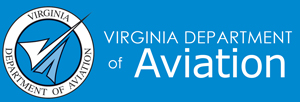November 2023
October 2023
September 2023
August 2023
- Virginia Aviation Conference Held at the Williamsburg Lodge
- Virginia’s Aviation Siblings: The DOAV and CAP
- ICON A5 Visit with Young Eagles
- Ambassador Ceremony to be held at Hummel Air Field
- Stafford Airport Holds Wings and Wheels Event
- 2023 Virginia Aviation Award Recipients Announced
- Top Eagles Speech from the Virginia Aviation Conference
July 2023
June 2023
May 2023
- Air Power Over Hampton Roads Returns to Langley AFB
- The 2023 FAA Airport Design Challenge Announced
- ICON A5 Visits Amherst County High School
- Aviation Events Held Across the Commonwealth
- ICON A5 Visits Schools in Southwest Virginia
- ICON A5 Visits Laurel Lane Elementary
- ICON A5 Flight in Tampa
- Danville Airport Open House and Free Flights
March 2023
February 2023
- ICON A5 Travels to Seven Pines Elementary
- ICON A5 Visit to Rural Point Elementary
- Charles J Colgan Scholarship
- Pathways Flight Academies Are Seeking Students
- OBAP Ace Academy
- DOAV Seeks High School Seniors for Scholarships
- DOAV Announces 2023 Aviation Art Contest Winners
January 2023
- 2023 Aviation, Aerospace and UAS Legislative Reception
- Virginia Aviation Photo Winners Announced
Virginia’s Aviation Siblings: The DOAV and CAP
Pop quiz. What does the Virginia Department of Aviation (DOAV) and the Virginia Wing of the Civil Air Patrol (CAP) have in common? It turns out the two organizations have the same father – Allen C. Perkinson.
Amazingly, 2023 is the 95th anniversary of the DOAV. Virginia’s State Corporation Commission had been regulating aviation since 1928, but when it formed the Division of Aeronautics ten years later, Allen C. Perkinson was named its director. At this time, the aircraft was barely a mature adult – only 35 years old – but the predecessor of the DOAV couldn’t have had a more experienced leader. Perkinson was a World War I aviator that had earned a Distinguished Flying Cross as well as a Purple Heart. When he accepted the job on the eve of the second world war, Perkinson, like other leaders of state aeronautical departments, saw the need to mobilize Virginia’s civilian aviation community to aid in the coming war effort. Eventually, all of these state-run civilian air organizations were brought together by the Federal government as the Civil Air Patrol.
True to its name, CAP (pronounced C-A-P, and not “cap”) aviators earned respect by patrolling the coast of the United States for German submarines. In the first three months of 1942, 52 ships were sunk by enemy U-boats, many of them in sight of the shore. For the next 18 months, CAP flew missions from “Maine to Mexico,” sighting over 173 submarines. They even armed general aviation aircraft like Stinsons and Fairchilds with bombs and depth charges to attack 57 of the marauding vessels. In fact, CAP is credited with sinking two of them. These patrols were directly responsible for the withdrawal of German submarines from American waters.
So what is the Civil Air Patrol today? It is still a volunteer-led, life-saving organization. While membership is not military service, CAP is organized like the armed services and is an auxiliary of the Air Force. This means that the organization supports the Air Force – as well as state and local governments – in the search and rescue, transportation, communication, and disaster-relief roles.
Perhaps the most visible part of CAP is their cadet program. The goal of this program is to teach young students leadership, fitness, and character in an aerospace environment. In fact, the DOAV and CAP share a similar objective of air and space education. This common goal has led the DOAV to be close partners with Virginia’s 22 individual squadrons, most of which are based at the Commonwealth’s public-use airports.
Colonel Elizabeth Sydow, the current Virginia Wing Commander of CAP had this to say about the legacy left by Perkinson:
Many of the missions from WWII are still active today in some form. We provide targets of interest (TOIs) for air defense training over the Washington, DC, area, and… provided TOIs for an exercise at Langley AFB using both small UAS (uncrewed aerial systems) and crewed aircraft. Search and rescue, disaster relief, and radio communications missions also began in WWII and continue today, although with advanced technology to be more effective and efficient. Our cadet program is strong, with 86 Spaatz Awards since 1971 and one of the largest cadet encampments in the nation. We continue to promote the importance of aviation and STEM through our internal and external aerospace education programs.
Col. Perkinson initiated CAP’s Summer Encampment at Richmond Army Airfield (now Richmond International Airport and current base of the DOAV) in 1943. This week-long program blends boot camp and summer camp for cadets to experience more than just leadership education – it allows for training in unmanned aerial systems (UAS), connecting with military air crews and their aircraft, and even an orientation flight!
Fittingly, this year’s encampment was held in Col. Perkinson’s hometown of Blackstone, where there is a joint public-use/military airport that bears his name. Also known by its identifier BKT, the airfield supports the Air National Guard, general aviation, and UAS operations. There, cadets experienced walk-throughs of Army Chinook helicopters, flying UAS aircraft in the base’s cavernous gym, and even a ride in an Army Blackhawk helicopter. The airport and the encampment is a fitting tribute to one of Virginia’s aviation founding fathers.
For more information on Virginia’s Civil Air Patrol programs please visit vawg.cap.gov.
